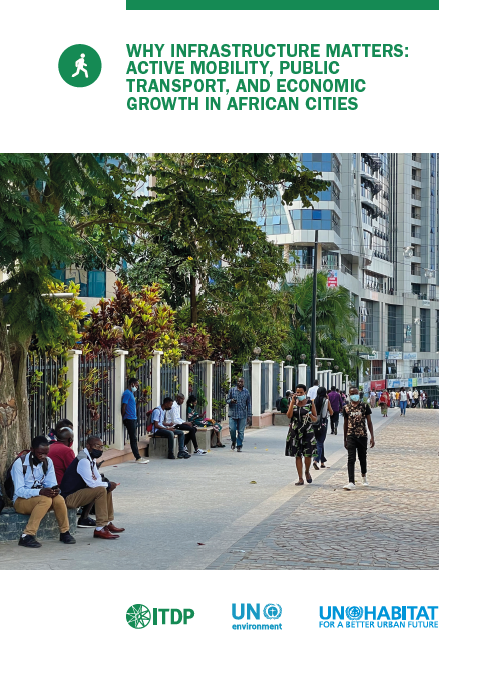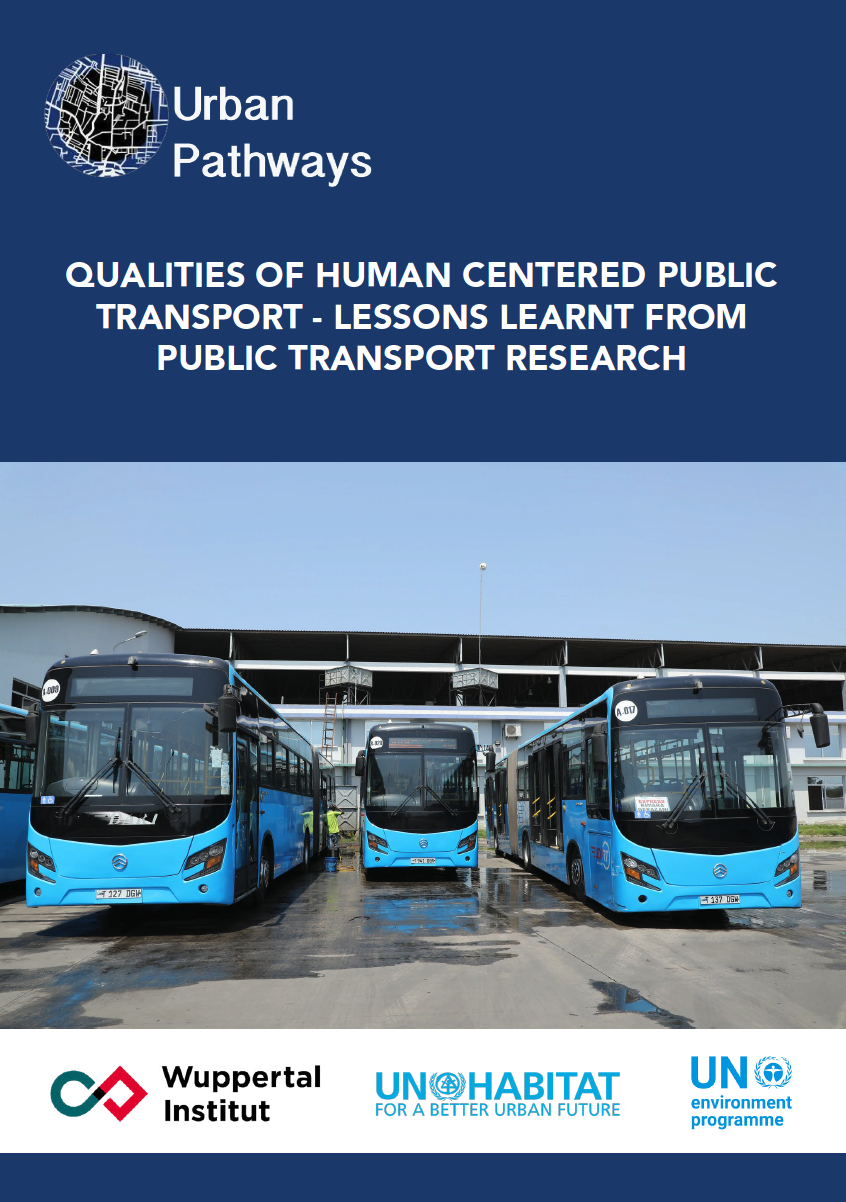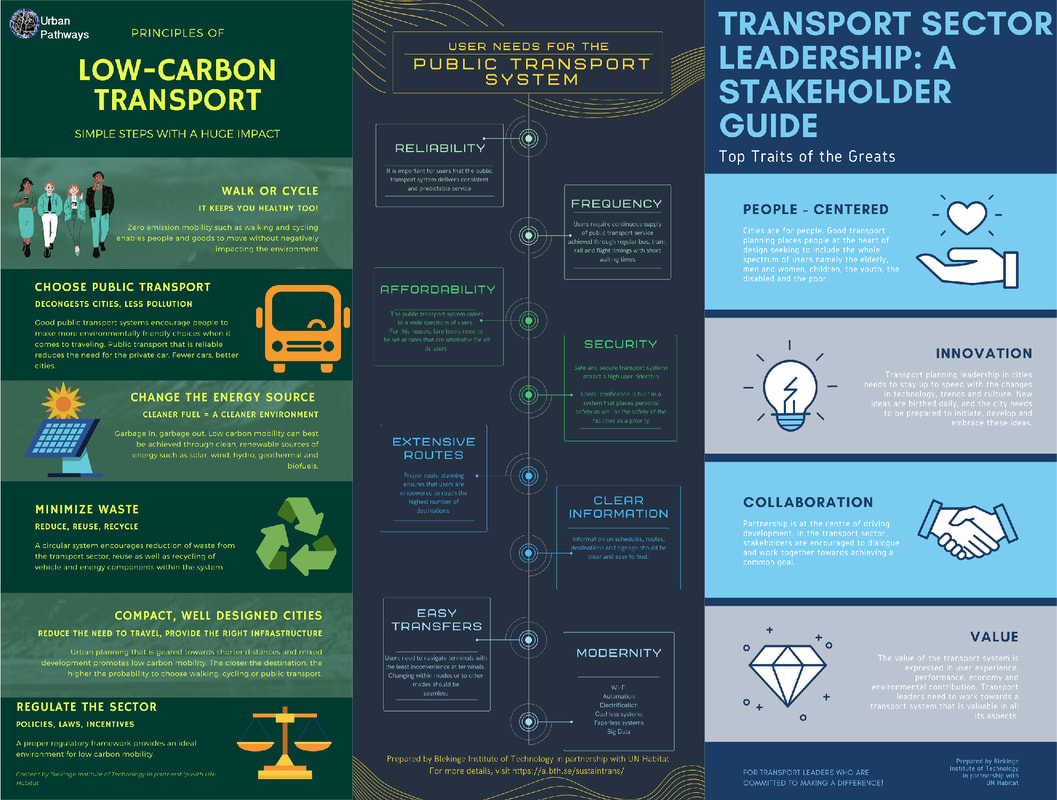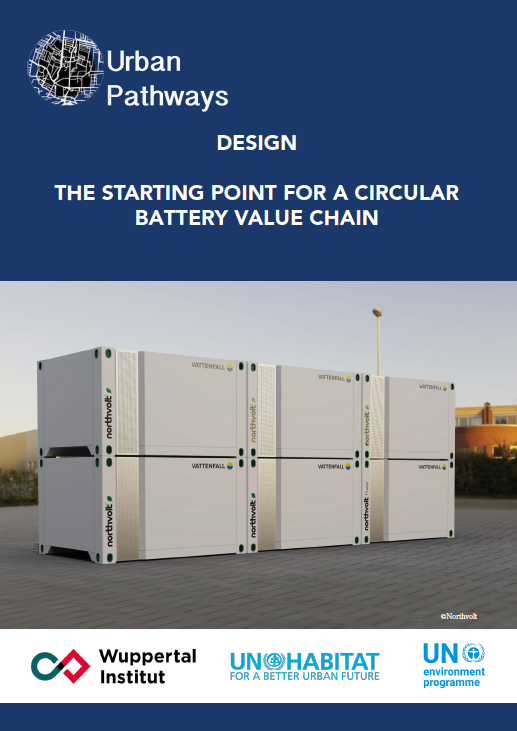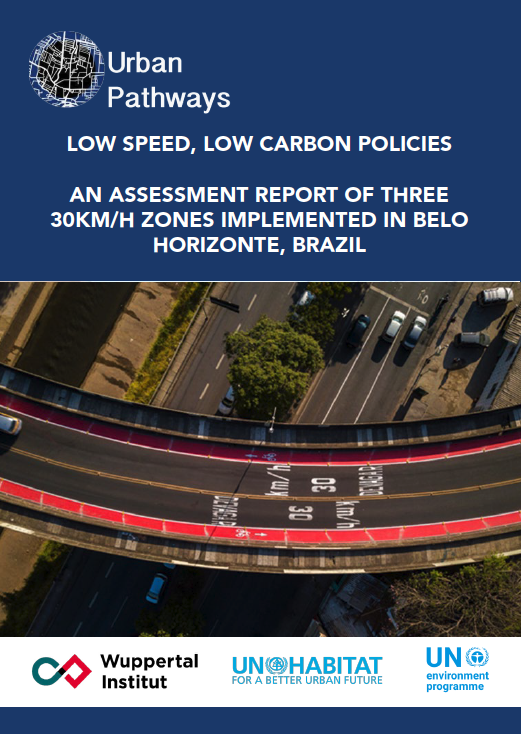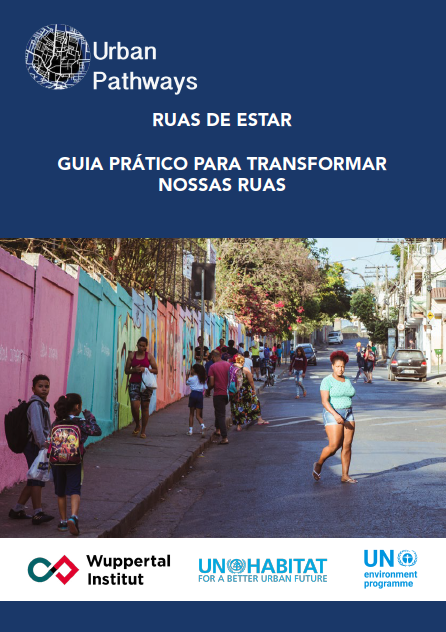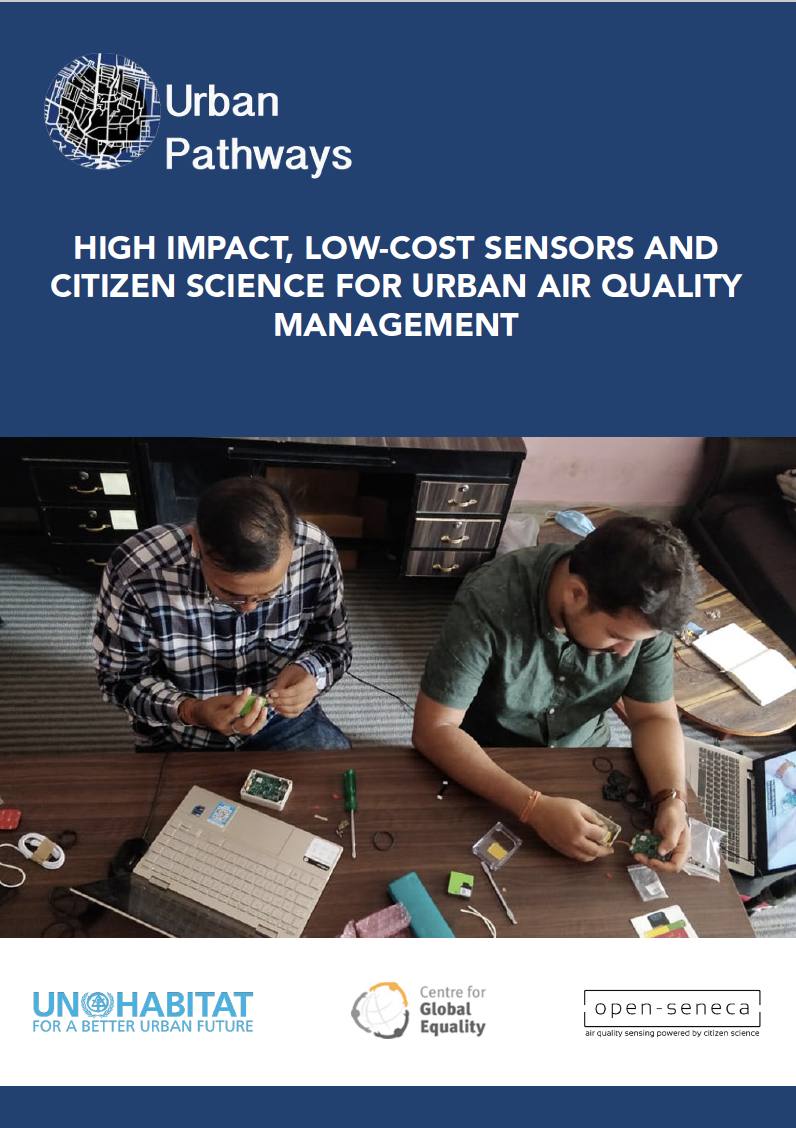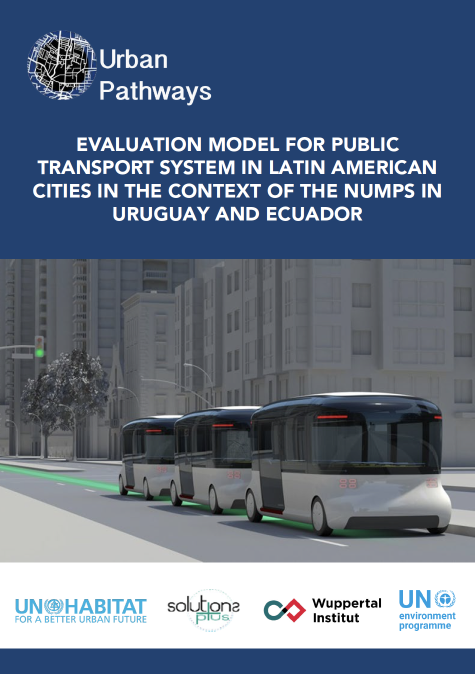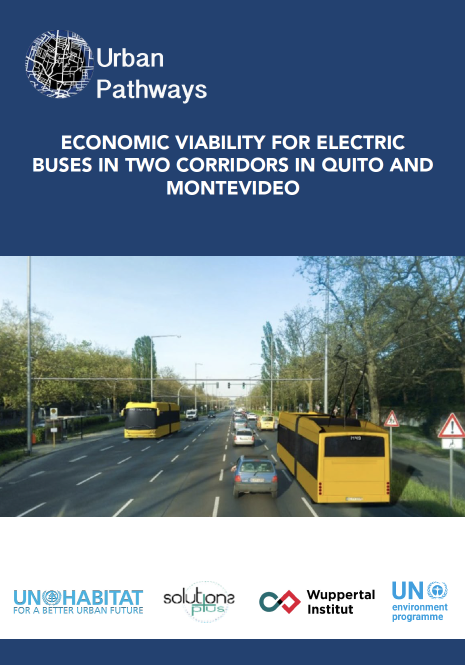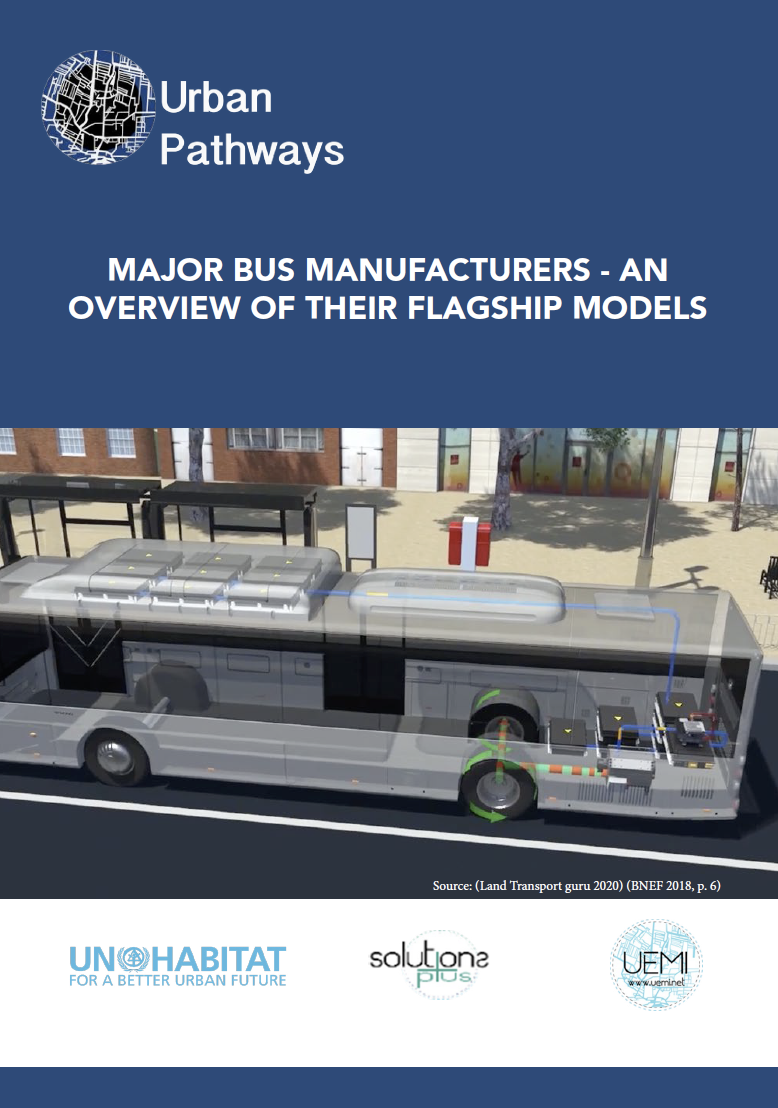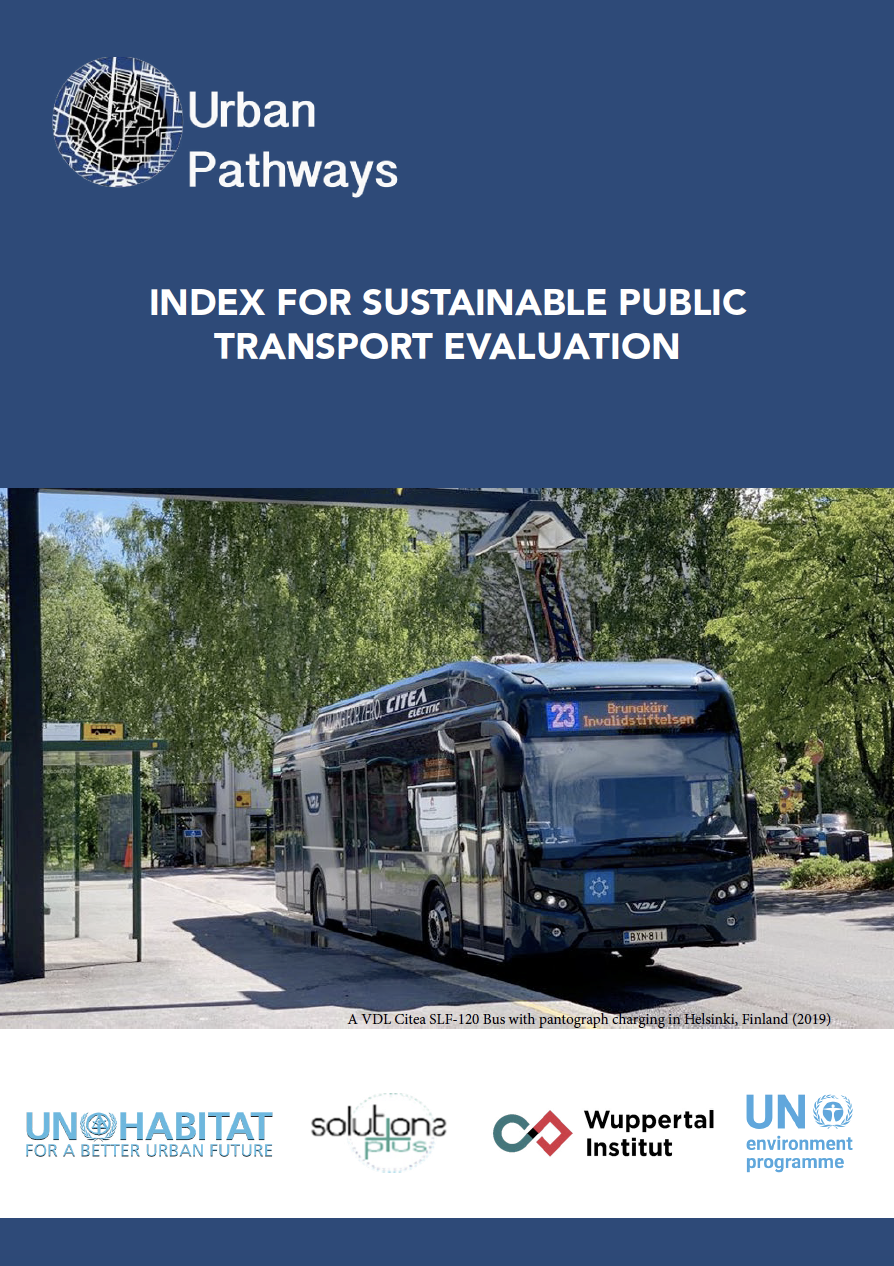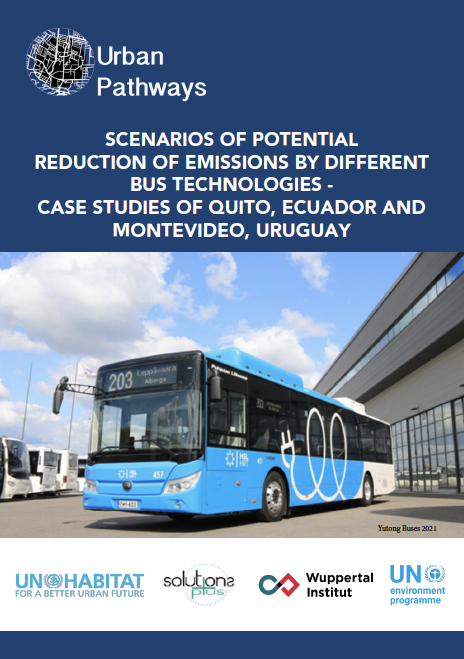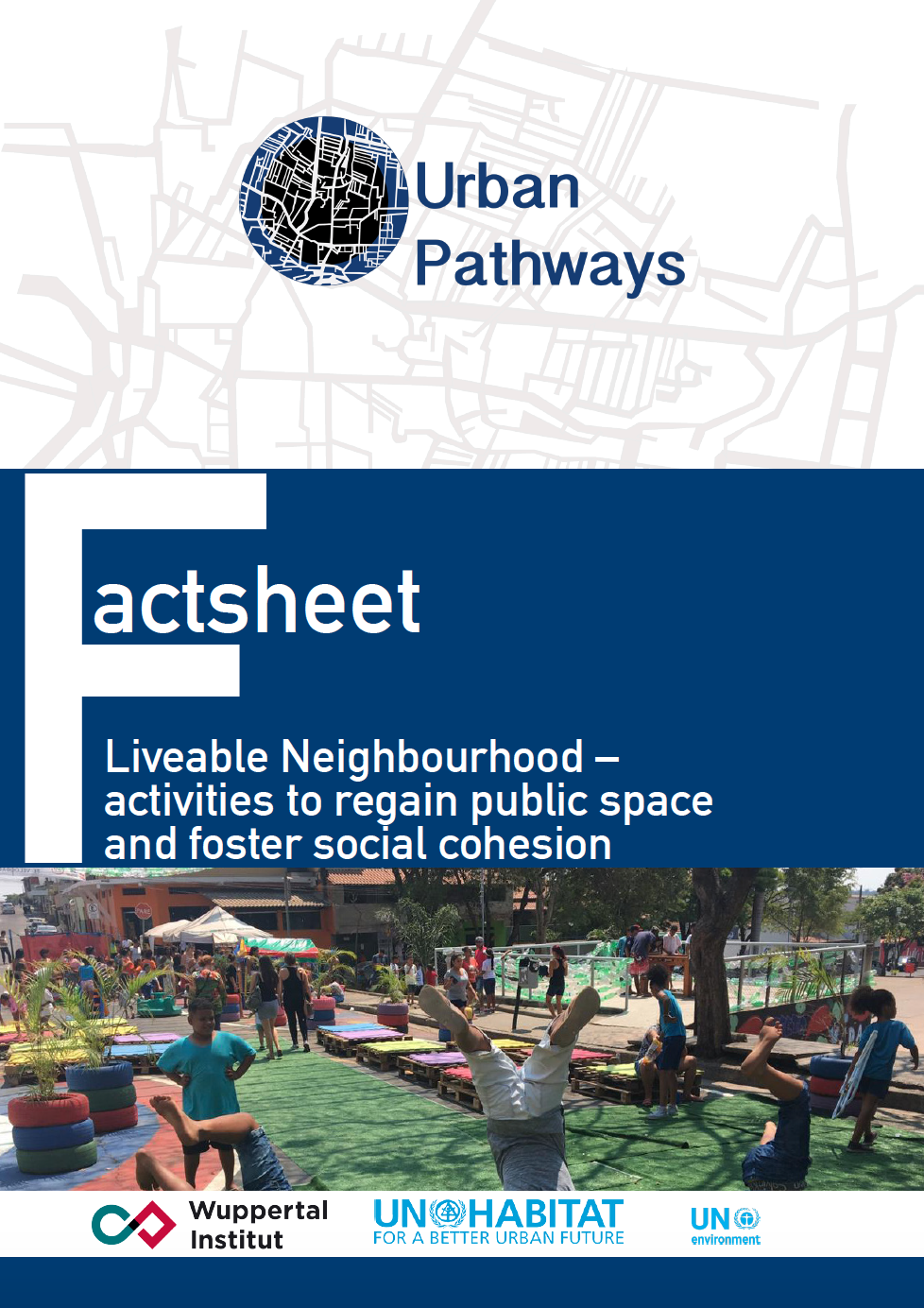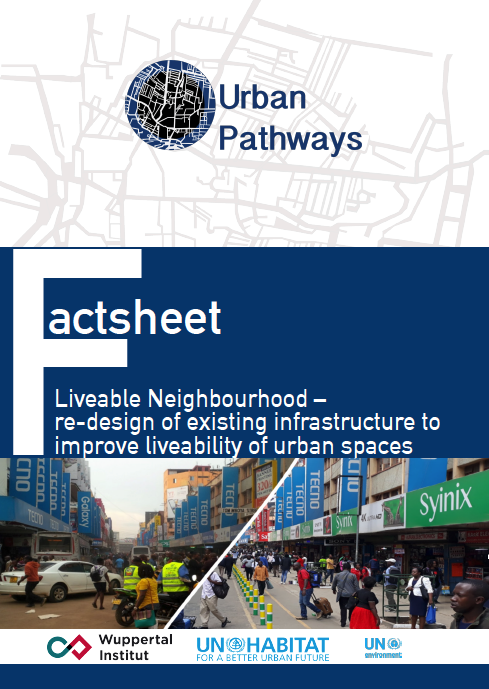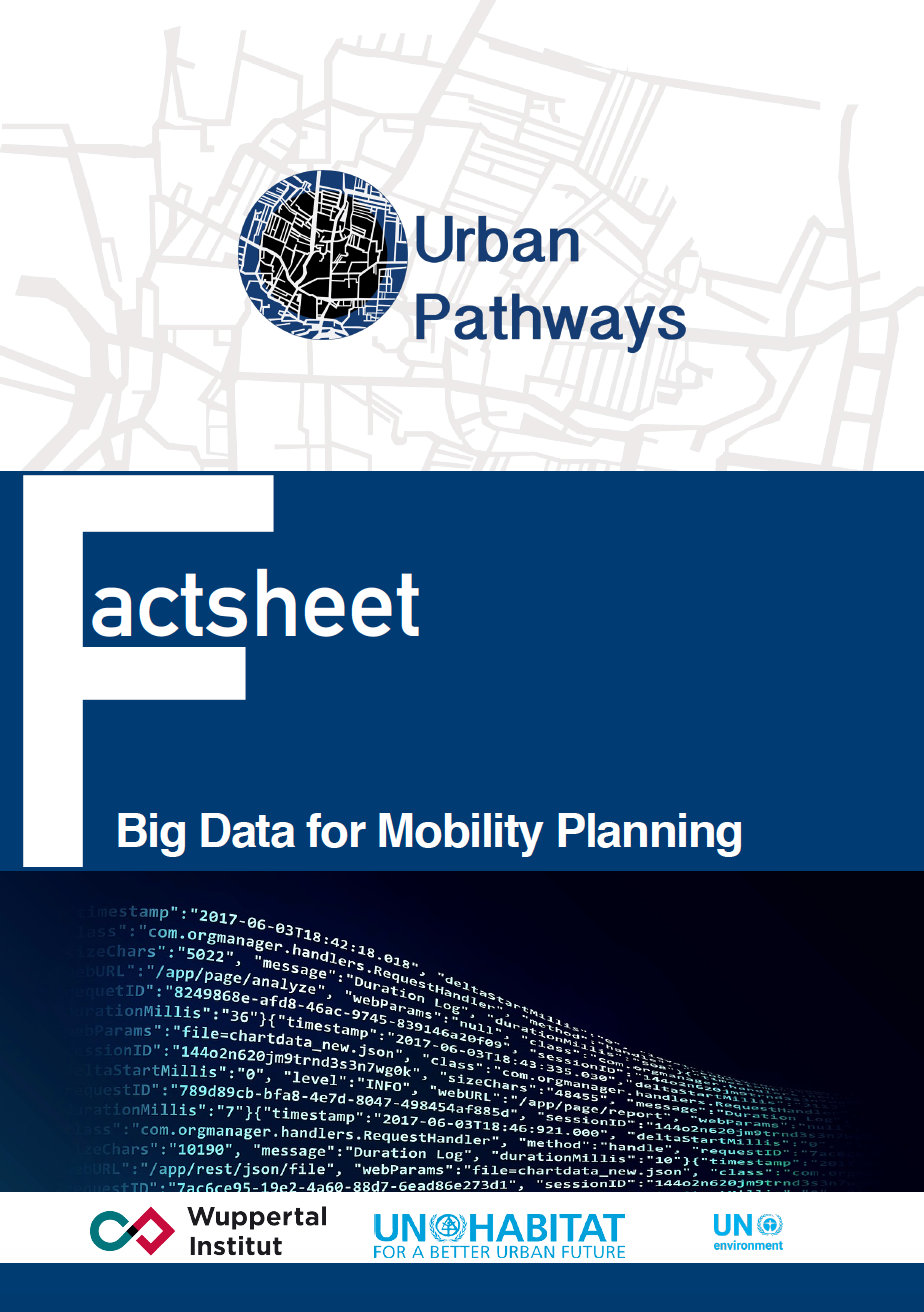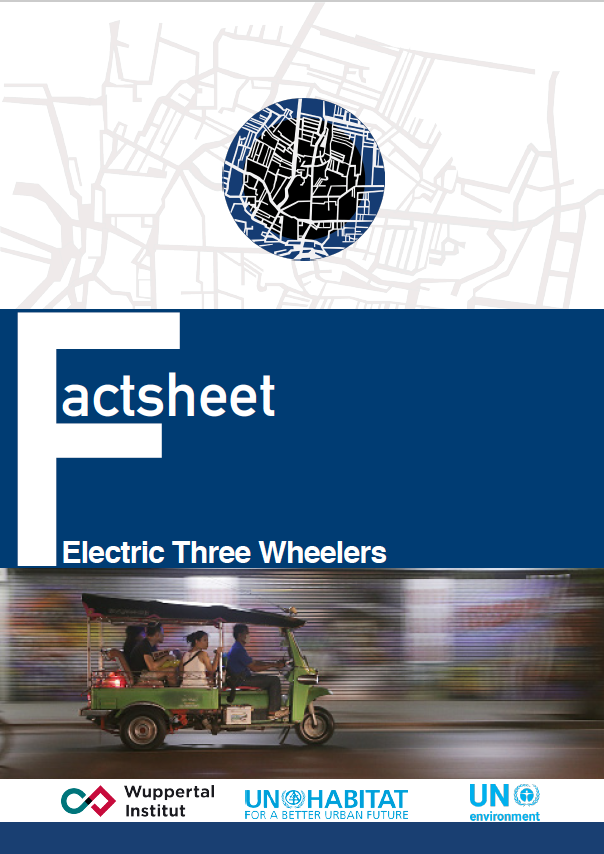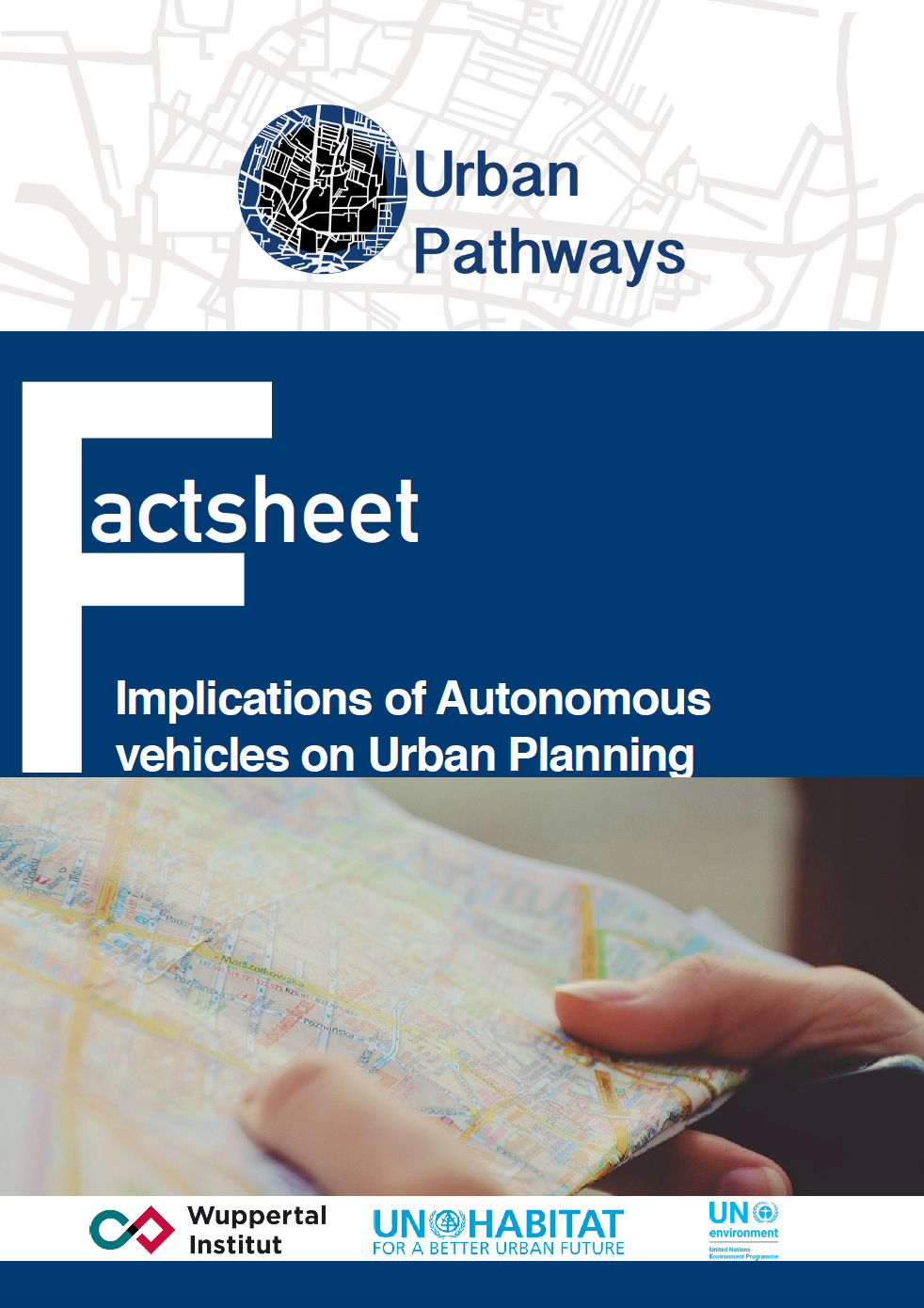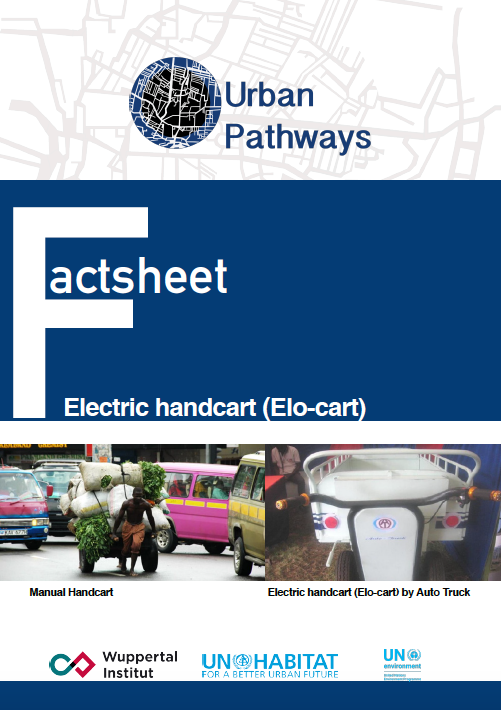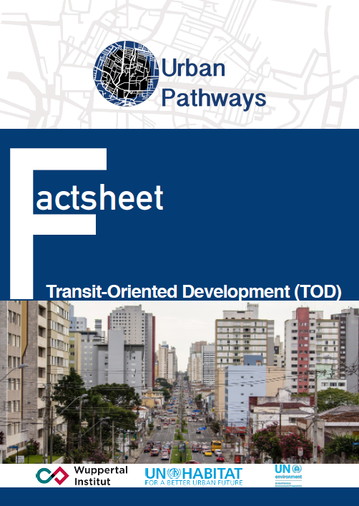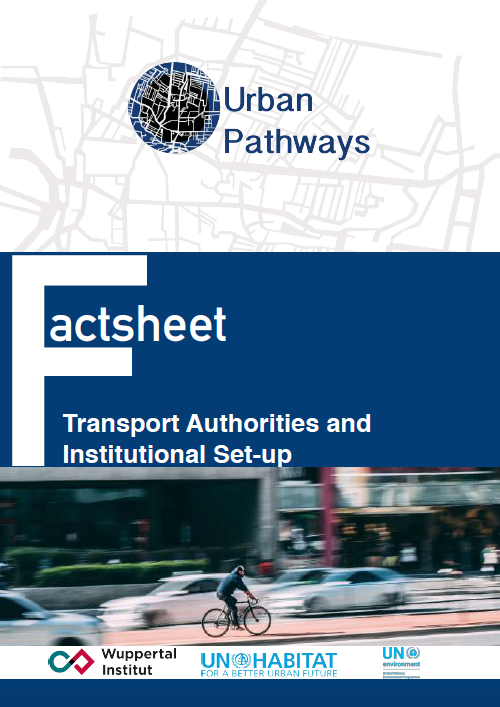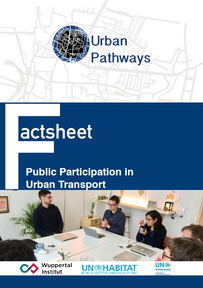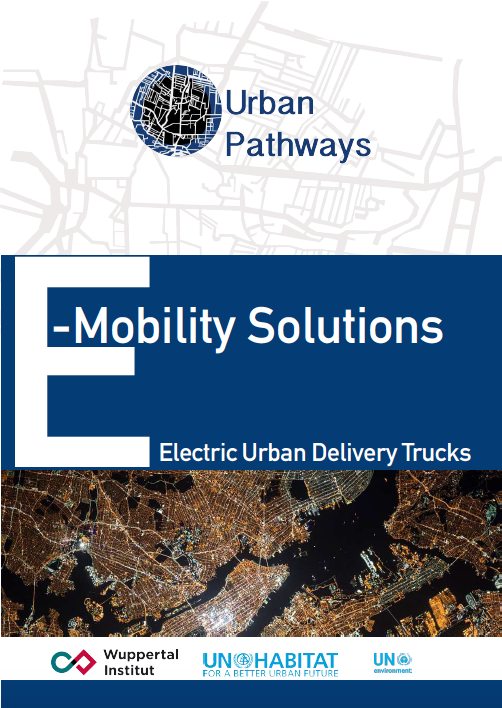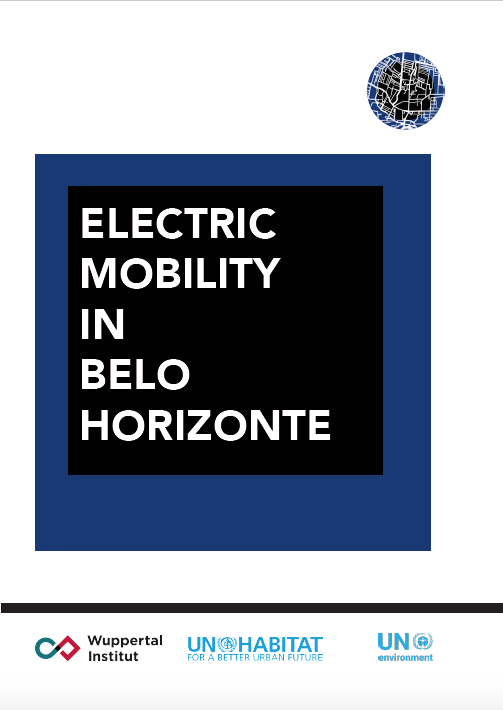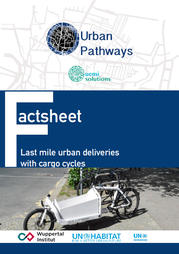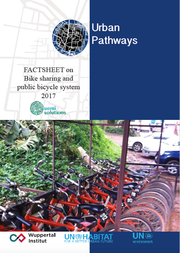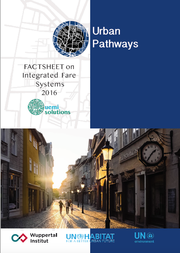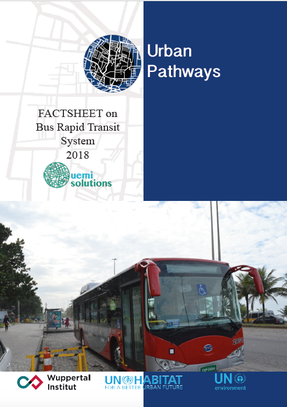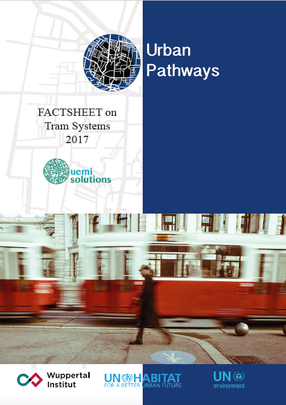Factsheets - Mobility
|
RUAS DE ESTAR
GUIA PRÁTICO PARA TRANSFORMAR NOSSAS RUAS O local que irá contar com uma intervenção de Rua de Estar pode ser indicado por um órgão de mobilidade ou mesmo por uma organização da sociedade civil. Durante o processo de escolha, é importante avaliar se a área escolhida conta com um grande volume de pedestres e automóveis e se é possível reverter a prioridade de circulação na via. |
|
High impact, low-cost sensors and citizen science for urban air quality management
Contributors: Center for Global Equality; Open Seneca This project aims to build capacity and provide tools that improve the air quality monitoring and management system of LMIC cities to support evidence-based decision-making processes related to reducing air pollution. Three Urban Pathways partner cities have been selected for this implementation: Kigali, Quito, and Kathmandu. |
|
Evaluation Model for Public Transport System in Latin American Cities in the context of the NUMPS in Uruguay and Ecuador
Contributors: Alexandra Velasco Urban mobility plays a key role in delivering on national objectives under the Paris Agreement, the Sustainable Development Goals and the New Urban Agenda. National governments play a key role in shaping urban mobility policy, planning and in- vestment through, for example, the regulation and taxation of vehicles and fuel use, through the transfer of power to local authorities, and through the management and appropriation of national land transport funds. |
|
Economic viability for electric buses in two corridors in Quito and Montevideo
Contributors: Alexandra Velasco In the context of the project Urban Pathways, this paper intends to give first inputs for the viability of electric buses in Latin American cities and to illustrate a methodology to evaluate sustainability and feasibility of electromobility in public transport on the continent. The focus is on two cities, Quito (Ecuador) and Montevideo (Uruguay), that are pilot cities within the wider framework of the SOLUTIONSplus project. Both cities have proportionated information about costs structure of either selected BRT (bus rapid transit) corridors (Quito) or conventional bus lanes (Montevideo). |
|
Index for sustainable public transport evaluation
Contributors: Alexandra Velasco A sustainable public transportation index for Latin America was developed to evaluate the sustainability of PT systems. The SPTI - Latam is composed by three subindexes: 1) the basic index containing 29 key performance indicators aggregated into four dimensions: environmental, social, economic and system effectiveness; 2) the extended index that addresses exogenous impacts affecting the sustainability of the system and includes 14 additional indicators; and 3) the global index which includes a fifth dimension called governance and integrated planning and 8 indicators. |
|
Scenarios of potential reduction of emissions by different bus technologies - Case Studies of Quito, Ecuador and Montevideo, Uruguay
Contributors: Alexandra Velasco Emissions of Motorized Public Transport and Public Health Scenarios of potential reduction of emissions by different bus technologies Quito case study Montevideo Case Study Methodology Results |
|
FACTSHEET No. 1
Liveable Neighbourhood – activities to regain public space and foster social cohesion A liveable neighbourhood is a neighbourhood in which streets and public spaces invite to stay, sit, roam and play, e.g. on park-like elements or pedestrianised zones, and where walking and cycling (active mobility) is encouraged. It is now increasingly being recognised that attractive, active, well-functioning public spaces help revitalizing communities and jumpstart economic development. The New Urban Agenda emphasizes the so-called placemaking, a collaborative process of shaping the public realm in order to maximize shared value (UN Habitat 2015). |
|
FACTSHEET No. 2
Liveable Neighbourhood – re-design of existing infrastructure to improve liveability of urban spaces This factsheet now focuses on those measures that involve bigger capital investments and re-design of existing infrastructure in order to make a neighbourhood more liveable . It is important to understand that placemaking does not focus only on enhancing already existing (maybe under-used) public spaces (plazas), but also on creating new public spaces out of existing infrastructure, e.g. carving out a little plaza by re-design of a street or crossing. |
|
Big Data for Mobility Planning
Data is being generated from multiple sources resulting in the formation of what is currently known as big data. Data sources are around us everywhere, smartphones, computers, environmental sensors, cameras, Geographical Positioning Systems (GPS), and even people. Various applications like social media sites, digital pictures and videos, commercial transactions, advertising applications, games, mobile phone activities, location-based positioning information, online activities and many more have helped accelerate data generation in the past few years. |
|
Electric three-wheelers, also known as E tuk-tuks or E-rickshaws, are an environmentally-friendly and economical means of urban transport that have been in use for a decade in many developing countries around the globe, including those in Asia, Central and South America, and Africa. E tuk-tuks are replacing fossil-fuelled auto-rickshaws in some countries. This also has the added benefits of directly enhancing urban air quality, contributing to a reduction of carbon emissions, as well as urban noise pollution with similar or better services. They are good at serving first/last mile connectivity, covering the distance between a station and a traveller’s final destination, and usually offering cheap and fast transport services.
|
|
Implications of Autonomous vehicles on Urban Planning
There is currently significant interest in autonomous vehicles-vehicles that are capable of intelligent motion and action without requiring either a guide to follow or a teleoperator control. Potential applications of autonomous vehicles include reconnaissance/ exploratory vehicles for space and undersea, land, and air environments; remote repair and maintenance, material handling systems for the office and the factory and even intelligent wheelchairs for the handicapped. This paper explores the effect that mass adoption of autonomous vehicles could have on the quality of life in cities, issues that urban planners need to consider in the present and proposes a sustainable path of adoption. |
|
Auto-Truck E.A Green Technologies Ltd
is a Kenyan company that was set up to research and manufacture green technology mobility products for the vast and untapped African market. The drive behind this company is Mr. Kenneth Guantai, a Kenyan innovator aged 34 years and who has great passion in environmental protection. His interest is in developing mobility technologies that can be harnessed to reverse pollution that results from fossil fuel combustion by the conventional motor vehicles. He has innovated his unique model of electric light-duty three-wheeler as well as electric handcart for use in light goods transportation and Taxi services in major Cities and towns across Kenya with the possibility of up-scaling to other regions of Sub-Saharan Africa and beyond. He is also at an advanced stage of developing a utility component that will enable his three-wheelers and handcarts to self- recharging with very little motion that will be known as Regenerative Motion Recharging System (RMRS), a technology that will enable EVs self-recharge through kinetic motion and which will completely eliminate the need for external power source like fuel or electricity plug in for operation. |
|
Factsheet: Transit Oriented Development (TOD)
TOD, a planning tool of smart growth that integrates land use and transport in a regional context, has been implemented in cities around the globe looking forward to counteracting main urbanisation issues (Galelo, Ribeiro, & Martinez, 2014) . At present, more than 100 TOD projects have been implemented in the United States (Cervero et al., 2004), and some efforts on TOD have been made along BRT corridors in Latin America, showing good practices as well as lessons learnt. Despite its undeniable benefits, the implementation of a TOD Strategy is complex, as it must integrate several aspects and sectors, which has posed several challenges on the executing agencies. Accordingly, this paper focuses not only on the definition and measures, but also on the lessons learnt and the gaps in the TOD interventions carried out so far with the aim to implement it successfully in future. Case Study: Curitiba |
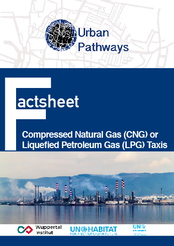 Quick view
Quick view
Factsheet: Compressed Natural Gas (CNG) or Liquefied Petroleum Gas (LPG) Taxis
A number of cities have introduced taxis that run on Compressed Natural Gas (CNG) or Liquefied Petroleum Gas (LPG) instead of conventional petrol or diesel, as they reduce air pollution and noise. However, the CO2 benefits vary and emissions may be even higher than an efficient diesel powered vehicle.
Case Study: Converting Delhi's Auto-Rickshaws to CNG (India)
A number of cities have introduced taxis that run on Compressed Natural Gas (CNG) or Liquefied Petroleum Gas (LPG) instead of conventional petrol or diesel, as they reduce air pollution and noise. However, the CO2 benefits vary and emissions may be even higher than an efficient diesel powered vehicle.
Case Study: Converting Delhi's Auto-Rickshaws to CNG (India)
|
Factsheet: Transport Authorities and Institutional Set-up
The governance of low-carbon urban mobility is critically dependant on how well the relevant transport authorities are structured, how clearly their roles are defined and the nature of their institutional vision (i.e their goals, aims and working principles etc.). The delivery of adequate, efficient, safe and comfortable urban mobility services to all citizens is a complex undertaking. Case Study: Land Transport Authority (LTA), Singapore |
|
Factsheet: Public Participation in Urban Transport
Like any urban development practice, which heavily relies on technical expertise and, at the same time, affects a wide range of stakeholders, the implementation of low-carbon mobility suffers from the biases of its planners. Such bias predominantly originates from the fact that the appointed experts may belong to a certain privileged class (based on gender, age or socio-economic class), while the users of public transport systems come from all walks of life. Such a division of perceptions coupled with a ‘top-down’ approach towards service-delivery tends to not only leave out low-income citizens, but also effects the efficiency of investment-heavy projects. To avoid this, local governments are increasingly adopting public participation processes for their transport-related policy, planning and project management. Participatory budget-funded bicycle infrastructure in Seville, Spain |
|
Factsheet: E-Mobility Solutions
The electrification of urban goods delivery using appropriate electric trucks can provide significant benefits to society by meeting the requirements of urban freight tasks in a cleaner, more efficient manner. Electric trucks may also prove to be more suited to urban delivery conditions (due to higher efficiencies at lower speeds, and the provision of regenerative braking that optimizes stop-start conditions). From a total cost of ownership perspective, electric trucks may also potentially lead to lower costs due to the absence of engine and transmission related issues. Case Study: New York City, USA |
|
Factsheet: Electric Mobility in Belo Horizonte
The Low-carbon mobility system was launched in 2016 by the governor of the State of Minas Gerais. The municipality of Belo Horizonte, on the other hand, has already tested and is starting to promote e-taxis and e-buses. Since 2010 Belo Horizonte has an innovative Sustainable Urban Mobility Plan, called PlanMob-BH, with comprehensive measures related to TOD, BRT and bike solutions, which include the planning and construction of a 23 km BRT system called MOVE BRT, a bike sharing system with 40 stations and 400 bikes, 2 pedestrianized streets, 150 km of bike lanes, Zones 30, Fahrradstraßen, among others. |
|
Factsheet: Last mile urban deliveries with cargo cycles
In many cities with severe congestion, trucks and vans struggle to deliver goods into city centres. Using bicycles to deliver small packages and mail and tricycles for heavier goods can be a solution. Electric motors often assist these cargo-cycles, which ride on normal roads, bike lanes and if local regulations allow even in pedestrian areas. Case Study: The Green Link - Paris |
|
Factsheet: Bike sharing and public bicycle systems
Bicycle-sharing systems fill in the gap between public transport and destination points, and satisfy citizens’ demand for short trips, reducing the time of commutes. In general, bicycle-sharing systems increase the choices of and accessibility to attractions by giving locals a wider range of destinations beyond their walking range at a low cost. By providing an alternative to the use of private vehicles, this transport mode also helps improve air quality and reduce transport congestion and noise. In addition, cycling brings both physical and mental bene ts for its users, and can help improve the urban image of a city and its culture. Case Study: Mexico city’s Bicycle-sharing system (Mexico) |
|
Factsheet: Integrated Fare systems
In many cities, especially large urban agglomerations, public transport is not provided by a single, unified government agency. Instead, passengers have to rely on several companies who provide services by often poorly integrated transport modes (such as rail, bus or taxi). These modes frequently have different schedules, route patterns, and fare systems. Integrated Fare Systems (IFS) are an attempt to create a single fare structure for all city public transport, allowing passengers to transfer seamlessly from one mode to another. This increases the efficiency and attractiveness of all city public transport. CASE STUDY: LONDON’S OYSTER CARD (UK) |
|
Factsheet on Bus Rapid Transit Systems
Bus Rapid Transit (BRT) systems are high-performance transport solution for urban corridors with a high demand for public transport. BRT is a bus-based alternative to rail systems (metro, light rail or subway systems) that is cheaper and quicker to construct and provides greater operational flexibility. BRT systems are a solution to public transport challenges and are important in managing the complex transport needs of growing cities with large populations. CASE STUDY: BOGOTÁ’S TRANSMILENIO BRT SYSTEM (COLOMBIA) |
|
Factsheet on Tram Systems
A tram system consists of vehicles, which run on tracks on urban roads. They usually share the street with other road users (private vehicles, cyclists, pe- destrians), but some lines might also operate on a segregated right of way. The lines or networks on which tramcars operate (known as tramways) are powered by electricity; they are designed to be unobtrusive to allow pedestrians, cyclists and drivers to freely circulate around them, or on the infrastructure when it is not being used by the trams. Depending on the design and the region, trams may also attach to overhead electric wires. Case Study: Croydon’s Tram system (United Kingdom) |



